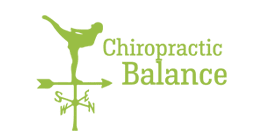Lower Limb and Spine Stretches
The strengthening of your lower back can help alleviate and prevent back pain. Studies have shown that stretching can be a useful tool to increase the body's range of motion[1,2].It can also play a key role after injury during a rehabilitation phase to help realign the muscle fibres for optimal healing[1]. The following exercises can increase blood flow to the lower back and leg region, which have been shown to reduce stiffness and speed up the healing process [3,4].
Performing these following exercises will promote healing, flexibility, increase stability, reduce pain as well as prevent injuries[1,2]. If you tend to experience low back pain, pay attention to your general posture and how you carry heavy objects to identify movements that may be contributing to it.
Anyone experiencing low back pain that is severe or does not go away with gentle stretches and exercise should consult your Chiropractor or local health care professional. If any of the following exercises make the pain worse, it is vital to stop them immediately and consult your Chiropractor.
Knee-to-chest Stretch
Doing a knee-to-chest stretch can help elongate the lower back, relieving tension and pain.
To perform this stretch:
Lie on the back on the floor.
Use both hands to pull one knee in toward the chest.
Hold the knee against the chest for 5 seconds, keeping the abdominals tight and pressing the spine into the floor.
Return to the starting position.
Repeat with the opposite leg.
Repeat with each leg 2–3 times twice a day.
Cat-Camel Stretch
The cat stretch can help lengthen the back, make it stronger, and ease tension in the muscles.
To perform this stretch:
Get onto the hands and knees with the knees hip-width apart.
Arch the back, pulling the belly button up toward the spine.
Slowly relax the muscles and allow the abdomen to sag toward the floor.
Return to the starting position.
Child’s Pose and Sacral Flexion
Child's Pose helps to stretch the hips, thighs, and ankles while reducing stress and fatigue. It gently relaxes the muscles on the front of the body while softly and passively stretching the muscles of the back torso.
To perform this stretch:
Take your knees wide and stretch your arms out in front.
Push down with your hands and sit back onto your heels.
Return to starting position.
Repeat 2-3 times.
Hamstring Posterior Leg Stretch
The hamstring and posterior leg stretch helps to elongate the hamstring and calf muscles at the back of your legs which may lead to increased flexibility.
To perform this stretch:
Lie on your back.
Put a band/scarf/belt/towel around one foot.
Use it to lift the leg as high as possible while keeping the opposite leg straight on the floor.
Hold for 30 sec.
Repeat on the opposite side.
Seated Lumbar Rotation
The seated rotation stretch helps to relieve low back pain as well as activate the core muscles.
To perform this stretch:
Cross arms on chest and ensure feet are flat on the floor.
Breathe in, then as you breathe out twist at the core to the right, keeping hips square and core engaged.
Hold this position for 5-10 seconds.
Repeat for the left side.
Repeat again 3x each side.
Seated Pigeon Stretch
The seated pigeon stretch helps to open up the hips and stretch the glutes and surrounding muscles.
To perform this stretch:
Sit up straight.
Place ankle on the opposite knee.
Keeping your back straight, hinge at the hips and bend forward to deepen the stretch if required.
Hold for 20-30 sec.
Repeat on opposite side.
Repeat again 3x each side.
For further stretching routines for spinal health, check out www.straightenup.org.nz.
References
- Page, P. (2012). Current concepts in muscle stretching for exercise and rehabilitation. International journal of sports physical therapy, 7(1), 109.
- Bandy, W., Irion, J., & Briggler, M. (1997). The Effect of Time and Frequency of Static Stretching on Flexibility of the Hamstring Muscles. Physical Therapy, 77(10), 1090-1096. doi: 10.1093/ptj/77.10.1090
- Hotta, K., Behnke, B., Arjmandi, B., Ghosh, P., Chen, B., & Brooks, R. et al. (2018). Daily muscle stretching enhances blood flow, endothelial function, capillarity, vascular volume and connectivity in aged skeletal muscle. The Journal Of Physiology, 596(10), 1903-1917. doi: 10.1113/jp275459
- Rifkin, B. (2011). Does Stretching Increase Blood Circulation?. Retrieved 3 March 2020, from https://www.sportsrec.com/338122-does-stretching-increase-blood-circulation.html


